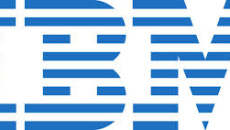The shares of International Business Machines Corp. (NYSE:IBM) fell in excess of 2.5 percent in the extended trading session yesterday after the company announced lower fourth quarter results with new profit target for fiscal 2015. IBM is one of the traditional IT companies that are adapting to the latest cloud computing industry while shedding their previous products.
This is the third consecutive year when IBM registered declining revenue streak and the company is constantly shedding its lower-end business units. While talking about the falling revenue, Martin Schroeter, Chief Financial Officer of International Business Machines Corp. (NYSE:IBM), said, “We’re not interested in revenue for revenue’s sake. We’ll continue to divest if something doesn’t fit the model.”
The latest trimming includes the lower-margin server unit of the company and at the same time, IBM is putting in more efforts in current tech industries including security software. What is more interesting is the fact International Business Machines Corp. (NYSE:IBM) is not the only company going through this phase.
Major tech giants including Oracle Corporation (NYSE:ORCL), SAP SE (ADR) (NYSE:SAP), Cisco Systems, Inc. (NASDAQ:CSCO), and Hewlett-Packard Company (NYSE:HPQ) are undergoing through similar structural transformation phase.
In its Fourth Quarter 2014 financial results, IBM reported net income of $5.5 billion with 11 percent decline from the previous year quarter and $24.1 billion in revenues with 12 percent decline. On a yearly basis, International Business Machines Corp. (NYSE:IBM) reported net revenue of $93 billion for fiscal 2014 against revenues of $107 billion in 2011. In addition to it, net income for the year was $15.8 billion against the net income of $16.9 billion in 2013.
Ginni Rometty, chairman, CEO, and president of International Business Machines Corp. (NYSE:IBM), said,
“We are making significant progress in our transformation, continuing to shift IBM’s business to higher value, and investing and positioning ourselves for the longer term.”
This article has been written by Prakash Pandey.


